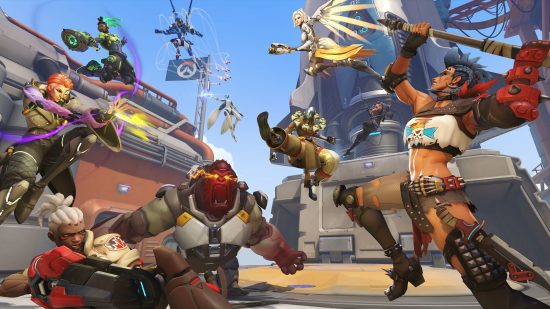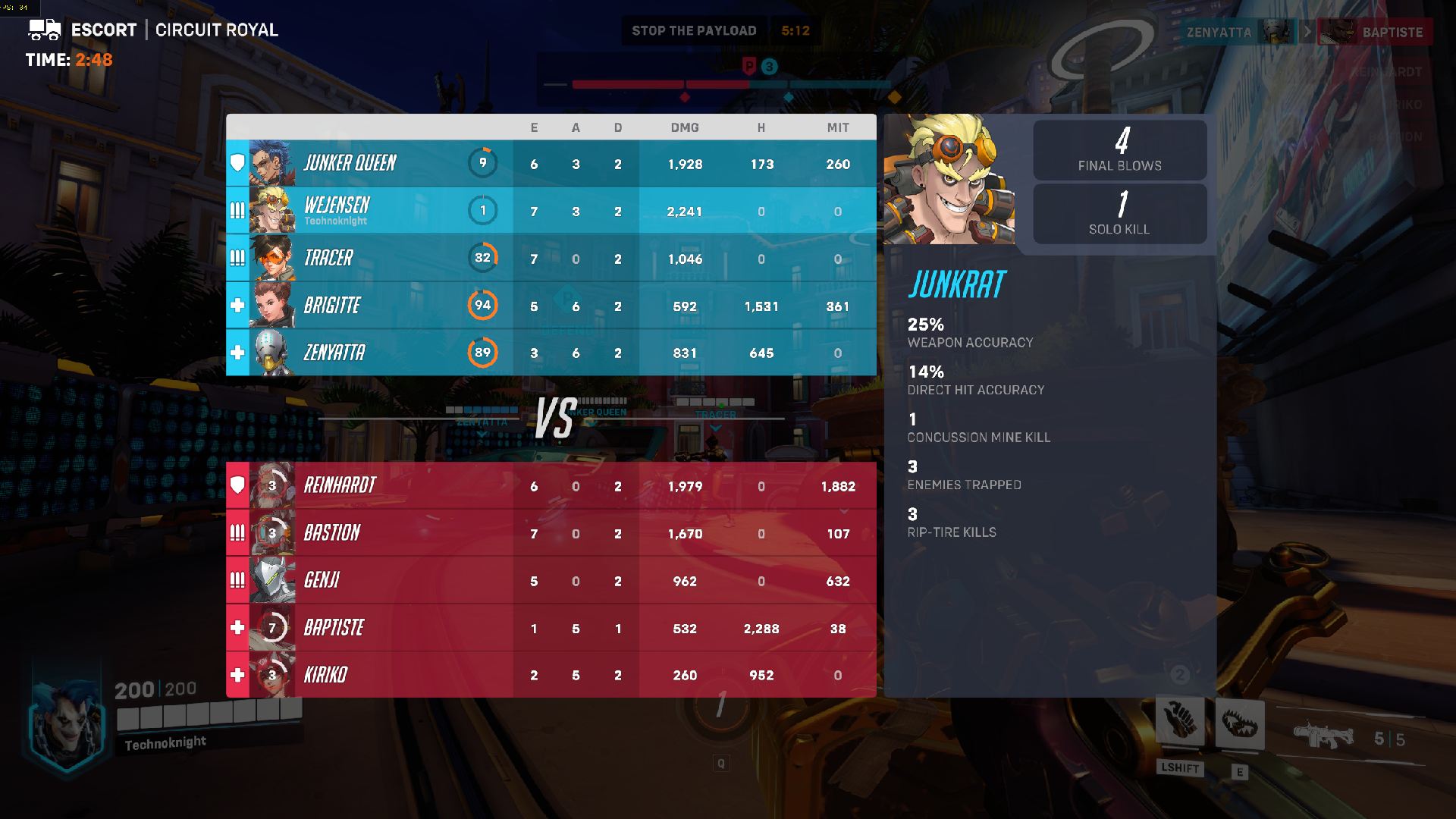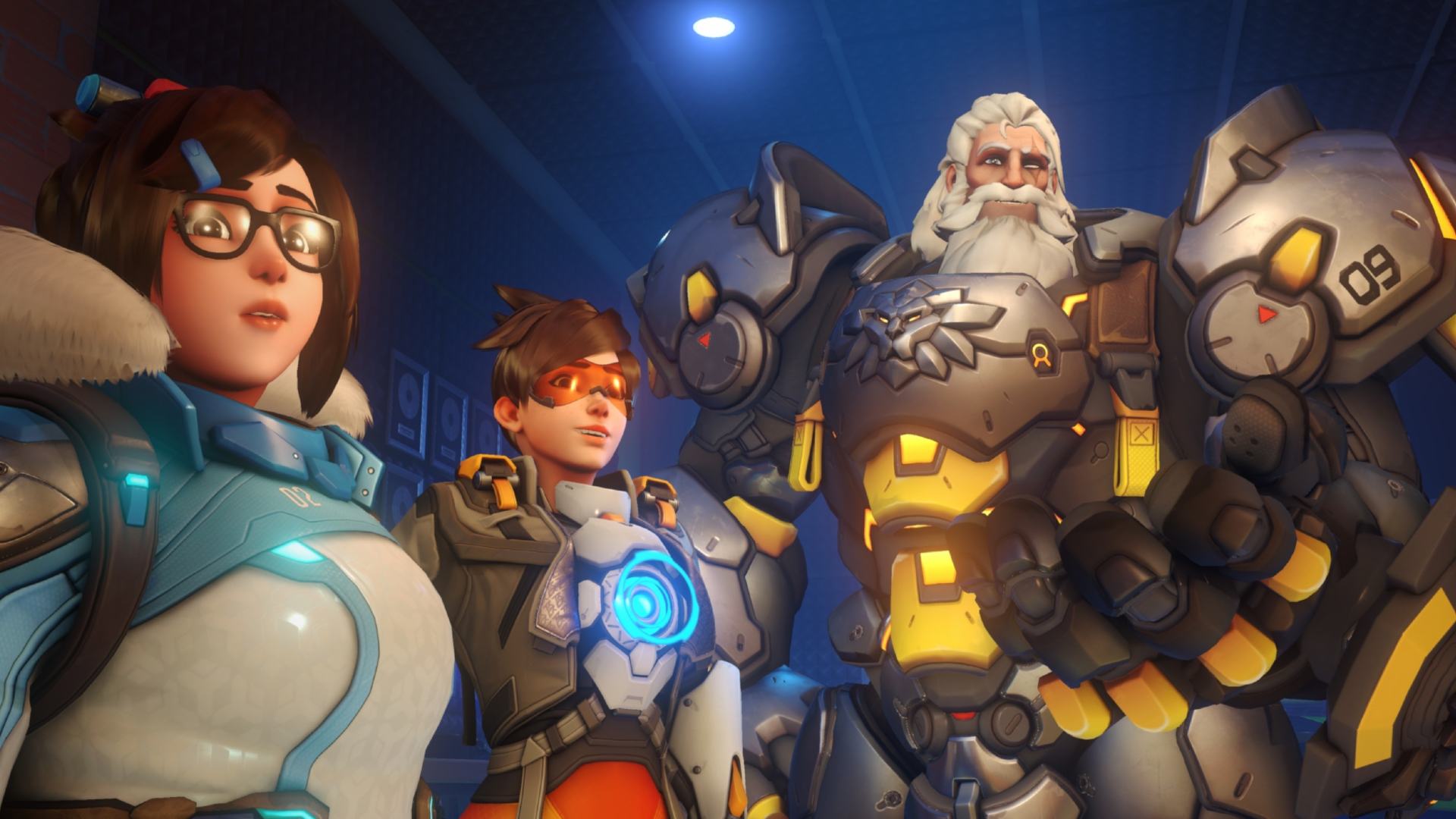How does Overwatch 2 competitive work? Overwatch 2 is here and while some of us will spend our time in regular online play, competitive is where the real excitement, intensity, and high-level play can be found in Overwatch. Blizzard is making a lot of changes to Overwatch 2 competitive ranks with the sequel while keeping some things from the original game.
This guide will explain how everything works in Overwatch 2 competitive. Whether it is rewards you are looking for, an introductory look at some of the surface-level changes to the mode, or an idea of how Blizzard has taken Skill Decay into account, this article is packed with information directly from Blizzard themselves and from our time playing.
Below, you can find a list of all those major changes, including the Overwatch 2 ranks for the mode, with links to each section of the article as well.
Overwatch 2 Competitive Mode Guide
Competitive mode is the ultimate challenge in Overwatch 2, where you are ranked and given a Skill Tier Division based on your performance, wins, and losses. As you do better or worse, you will either climb or drop down the ranks moving between Bronze and Grandmaster.
But, in Overwatch 2 there are a number of changes or alterations to the formula that are worth knowing about or being aware of before you start playing.
Overwatch 2 Competitive Mode changes
Overwatch 2’s competitive mode has seen a new match-focused UI when playing it. Skill Tiers and player levels are now no longer displayed before each match and name cards and titles take the spot on the new UI.
Your Career Profile also now displays a new Game Report section. This appears under the History tab and provides a summary of all the matches played in your current Overwatch 2 session. This report shows the gamemode, map, heroes played, and for how long they were played, the final score of the match, as well as your performance. This includes eliminations, assists, and deaths.
You can also expand your report for each character to get more in-depth details about your performance with them. For example, you can see your players healed with abilities as a support character like Ana or Mercy. Widowmaker and Ana will show ranged stats, like your accuracy while scoped. And, your ability stats are personalised to each hero, so you can really dive into the nitty gritty details about each game in Overwatch 2.
How to unlock Competitive Ranked Mode
To unlock competitive mode in Overwatch 2, it depends on whether you are a new or returning player, according to Blizzard:
- New player = Competitive mode will be unlocked after you have won 50 quick play matches and played the guided firs-time user experience
- Returning player = competitive mode will be unlocked automatically if you had it unlocked in the first game
That first-time user experience will take new players through some of the core features of Overwatch, how the game works, unlocking heroes, progression, and more and should complete itself alongside the time it takes to win 50 quick play matches. This is a pretty big ask from players, but based on what Blizzard has signalled, it is clear they want Ranked to be for those who have experience with the game.
For returning players, if you didn’t unlock competitive mode in Overwatch, you will need to follow the same path as new players, which could see you waiting a while to play it.
Competitive placement matches explained
To be ranked in Overwatch 2, you will need to take part in a number of placement matches. After your first seven wins or 20 losses, you will then be ranked into your skill tier division or ‘rank’, says Blizzard in the blog post above. Once ranked you will initially be placed into the lower tiers of skill divisions, no matter your win/loss record so that you can progress throughout the ranks in the season.
These placement matches will be the base of your ranked career in Overwatch 2 and after unlocking ranked mode, they are what will be used to determine how far you have to climb to reach the top skill divisions. Like with other competitive games, once you have begun your placement matches, you can’t reset your progress. Every win and every loss counts.
Skill Tier Divisions and ranks
SR from Overwatch is being replaced by the new Skill Tier Divisions in Overwatch 2, which Blizzard has detailed in full in the aforementioned blog post. The new Skill Tier Divisions represent similar tiers to what we saw in Overwatch, though: Bronze through to Grand Master and 5 (lowest) to 1 (highest). The top 500 will not have tier divisions, however.
The reason behind this Switch according to Blizzard in the blog post linked earlier in this article is that the studio wanted to “relieve the sense of being stuck at a certain rank”. Ultimately they thought seeing your SR go up or down after a match wasn’t rewarding in that you were being judged for each moment, adding a lot of pressure, while not representing how players were performing overall. Skill Tier Divisions solve this by providing a higher view of where they are placed.
Each division represents a 100 SR range from the first game and players will receive a competitive update for every seven wins or 20 loses, instead of each game.
We don’t yet have a good idea of the individual ranks within Overwatch 2, but we will update this article with them once they are revealed and we get hands-on with the mode.
Top 500 leaderboards
For the most part, Top 500 leaderboards are as they were in Overwatch. Separated by input pool, you will need to play 25 games for a given role in Role Queue or 50 games in Open Queue in order to be eligible for the Top 500.
Top 500 leaderboards in Overwatch 2 unlock two weeks into the start of each new season and cross-platform players can view separate leaderboards by input pool. This is only for those who play across different platforms in competitive mode, not if you have crossplay enabled.
Skill Decay explained
Skill Decay is a part of the Overwatch 2 ranked mode experience. But, Blizzard has taken this into account, as they detail in the blog post earlier in this article. Skill Decay is the decay of a player’s skill as they play less and less Overwatch 2 competitive. To account for this, if a player returns to the game after not playing for a while their matchmaking rating (not their actual rating) will be lowered to help determine their current skill level.
That internal matchmaking will shift more quickly through Skill Tier Divisions, up or down, when they continue to play matches upon returning to the game. This is to ensure they get back to their appropriate skill division.
Competitive Mode rewards
Competitive seasons in Overwatch 2 align with regular seasons, so they will last nine weeks and competitive rewards take the form of limited Competitive Titles for your name card. In addition, you can also earn Competitive Points in Overwatch 2 ranked for winning matches and reaching the highest Skill Tier in any of your roles in the following amounts:
- Winning a match: 15 CP
- Drawing a match: 5 CP
- Bronze Skill Tier: 65 CP
- Silver Skill Tier: 125 CP
- Gold Skill Tier: 250 CP
- Platinum Skill Tier: 500 CP
- Diamond Skill Tier: 750 CP
- Master Skill Tier: 1,200 CP
- Grandmaster Skill Tier: 1,750 CP
Earning 3,000 Competitive Points allows you to earn a Golden Weapon for any of the Overwatch heroes. However, in Overwatch 2, bonus points earned at the end of a season are capped to the highest Skill Tier Division you reach in any of your roles. So, if you reach Master as a support and that is the highest you got in any of your roles, you will get 1,200 Competitive Points.
Competitive Titles are earned as you climb the ranks in the mode. Titles can only be earned at the end of a competitive season to be used in the following season, with that process revolving and repeating every nine weeks. Older Competitive Titles from before the last season will not be able to be used in the current one.
With these wide, significant changes to ranked mode in Overwatch 2, it is clear Blizzard is wanting to ensure the game is in a good healthy state as much as possible. The various changes here like Skill Tier Divisions, new UI elements, and how you are placed all should ensure that Overwatch 2 competitive manages to hold its own throughout the sequel’s lifespan as new heroes are added to the game and existing heroes move up and down the Overwatch 2 tier list.







